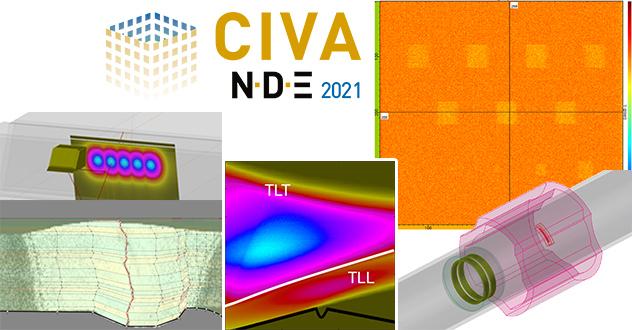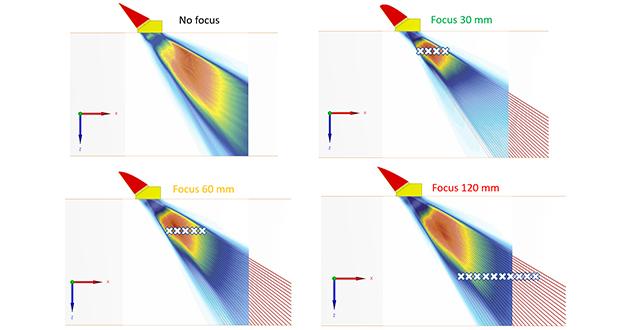10.072021CIVA 2021 is now available!Category "CIVA Software" | No comment

CIVA 2021 features:
- A new NDE method joins the CIVA platform with a Thermographic Testing module. It includes Optical lamp thermographic inspection simulation and an Induction Heating computation module.
- A dedicated tool for Steam Generator Tube Eddy Current inspection modelling, with the capacity to simulate many complex configurations (U-Bend, support plates, complex defects, section distortions, etc.). CIVA ET now also provides the possibility to perform field computations in complex geometries.
- CIVA UT comes with a new "Sensitivity Coverage" environment to give ultrasonic coverage and sensitivity maps, advanced features for PA UT TFM to help select the most efficient modes, new probes in CIVA UT (Daisy, Shear Waves 0°, etc.), and also more possibilities offered for complex configurations with the FEM engine available within CIVA UT.
- CIVA RT now includes a bridge to the advanced analysis software ImageJ.
- CIVA GWT lets you simulate inspection configuration with more defects and discontinuities.
- Parametric studies and metamodels have been reorganized for more efficient design of experiments.
- And let’s not forget the recent CIVA SHM and CIVA Script modules that are, of course, still there in CIVA 2021!
You will find more information about the new features of CIVA 2021 in our release note and a complete description of CIVA in our datasheet.
Our users with a valid maintenance contract will receive this update within the next few days.
Do not hesitate to contact us if you have any questions about CIVA.
The EXTENDE team.

